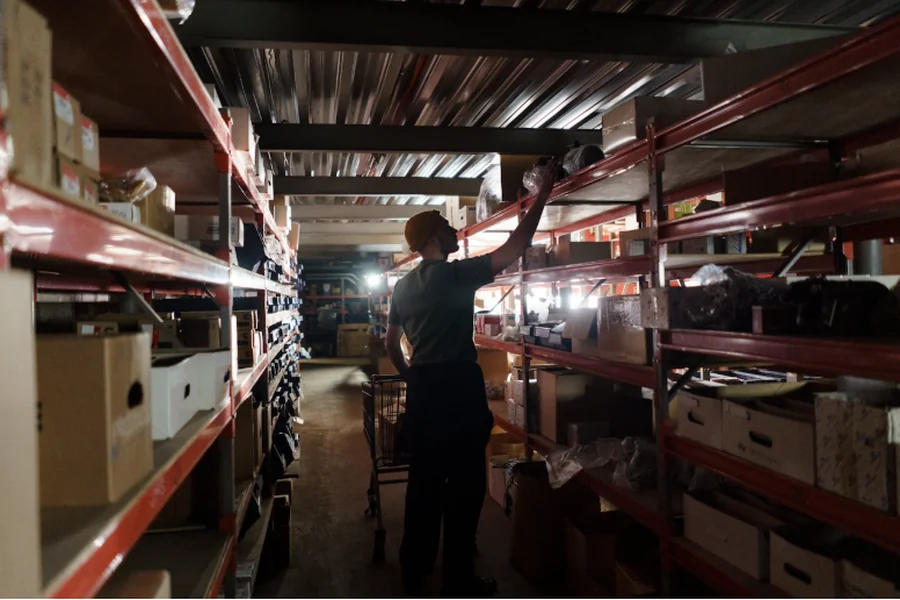Modern warehousing is undergoing a transformation—driven by numbers that speak for themselves. According to the International Warehouse Logistics Association, the global warehouse and storage market reached over $600 billion in 2024, with forecasts projecting continued double-digit growth due to the rise of e-commerce and automation. In the U.S. alone, warehouse space demand surged by more than 30% in the past five years, while in Australia, vacancy rates in industrial real estate are below 1%, reflecting the urgent need for more advanced storage solutions. These figures highlight the critical role warehouses play in today’s supply chains—and why modernization is no longer optional.
In today’s fast-paced and digitally connected economy, warehousing is not just about storing goods. It’s about speed, accuracy, adaptability, and integration. Modern warehousing has evolved into a high-tech, data-driven operation that forms the backbone of global commerce. As businesses adapt to digital shopping, consumer expectations for fast shipping, and the need for lean inventory management, warehousing facilities have transformed to meet new challenges.
The Shift from Traditional to Modern Warehousing
Traditional warehouses primarily functioned as static storage spaces where goods were manually stored, picked, and shipped. These operations were heavily dependent on manual labor and paper-based processes. While functional, they often lacked efficiency, were prone to human error, and offered little real-time visibility.
Modern warehousing, by contrast, incorporates automation, robotics, digital inventory management, and advanced analytics to create dynamic and responsive environments. These facilities are strategically designed to optimize space, streamline operations, and integrate with larger logistics ecosystems.
Key Drivers of Warehouse Modernization
Several forces have accelerated the shift toward modern warehousing:
1. E-commerce Boom
The explosion of online shopping has dramatically changed customer expectations. Consumers now demand faster delivery times, real-time tracking, and seamless returns. This has forced warehouses to adopt more efficient systems to meet delivery timelines and maintain customer satisfaction.
2. Labor Shortages

The logistics and warehousing industries are grappling with ongoing labor shortages. As a result, businesses are turning to automation to reduce dependency on human workers while maintaining or even increasing output.
3. Supply Chain Complexity
Globalization, just-in-time inventory practices, and multi-channel fulfillment strategies have added complexity to supply chains. Modern warehouses help manage this complexity with integrated systems that provide end-to-end visibility and control.
4. Sustainability Goals
Companies are also under pressure to meet sustainability goals. Modern warehouses often incorporate energy-efficient technology, waste-reduction strategies, and smarter transportation planning to reduce environmental impact.
Technologies Powering Modern Warehousing
The modern warehouse is a technological ecosystem. Here are some of the most influential technologies shaping the industry:
1. Warehouse Management Systems (WMS)
A robust WMS lies at the heart of modern warehouse operations. These systems offer real-time visibility into inventory, order processing, picking, packing, and shipping. WMS platforms often integrate with enterprise resource planning (ERP) systems and transportation management systems (TMS) to ensure seamless coordination across the supply chain.
2. Automation and Robotics
From automated storage and retrieval systems (AS/RS) to robotic picking arms and autonomous mobile robots (AMRs), automation has drastically improved speed and accuracy in warehouse operations. Robots can work 24/7, reduce error rates, and improve warehouse throughput without increasing labor costs.
3. Artificial Intelligence and Machine Learning
AI-powered systems analyze historical data to forecast demand, optimize inventory levels, and streamline workflows. Machine learning algorithms can also identify inefficiencies, suggest layout improvements, and adapt to changing conditions.
4. Internet of Things (IoT)
Smart sensors and IoT-enabled devices track goods, monitor equipment performance, and collect environmental data (like temperature and humidity) critical for sensitive products. These tools enable predictive maintenance and ensure product integrity. Many facilities now provide forklift hire as part of integrated logistics solutions, ensuring companies can scale operations without investing in permanent equipment.
5. Cloud Computing and Data Analytics
Cloud-based platforms allow for scalable, secure, and collaborative data management. With powerful analytics tools, warehouse managers can gain insights into key performance indicators (KPIs) and make data-driven decisions to improve efficiency and reduce costs.
Features of Modern Warehouses
Modern warehouses are designed with functionality, flexibility, and innovation in mind. Some defining features include:
- Modular racking systems adaptable to changing inventory needs
- Flexible floor layouts optimized for automation and zone-based picking
- Energy-efficient systems including LED lighting, solar panels, and optimized HVAC
- Real-time inventory tracking using RFID or barcode scanning
- Multi-channel fulfillment capabilities for retail, online, and B2B orders
Benefits of Modern Warehousing
The shift to modern warehousing brings multiple benefits for businesses:
1. Increased Efficiency
Automation and intelligent workflows reduce cycle times, enabling faster order processing and shorter delivery windows.
2. Improved Accuracy
Digital inventory tracking and robotic picking dramatically lower error rates, which reduces returns, increases customer satisfaction, and minimizes costs.
3. Enhanced Visibility
Modern systems offer real-time data on inventory levels, shipment statuses, and warehouse performance, helping businesses make better decisions and avoid stockouts or overstocking.
4. Scalability
As demand fluctuates seasonally or unexpectedly, modern warehouses can scale operations quickly without sacrificing efficiency or accuracy.
5. Cost Savings
Although the initial investment in modernizing a warehouse can be high, businesses often experience long-term cost reductions through better resource utilization, fewer errors, and lower energy consumption.
6. Competitive Advantage
Fast and accurate order fulfillment is a powerful differentiator in today’s marketplace. Businesses that modernize gain a distinct edge in customer service and reliability.
Challenges in Modern Warehousing
Despite the advantages, modern warehousing isn’t without its challenges:
- Upfront Costs – Automation and smart systems require significant capital investment
- System Integration – Merging new technologies with existing systems can be complex
- Cybersecurity – Increased digital dependence introduces new risks
- Training – Workers need upskilling to manage and operate new technologies
Many companies are addressing these challenges through phased implementations, cloud-based software, and partnerships with logistics technology providers.
Looking Ahead: The Future of Warehousing
As technology continues to advance, the warehouse of the future will look even more intelligent and autonomous:
- Fully automated warehouses with minimal human input
- Blockchain for secure, tamper-proof supply chain transparency
- Drones for both inventory monitoring and outdoor last-mile delivery
- Augmented reality (AR) tools for guided training and picking
- Green warehousing with zero-emissions fleets and carbon-neutral design
Ultimately, warehouses will shift from being reactive spaces for storage to proactive centers of data-driven, automated fulfillment.
Modern warehousing is more than just an upgrade—it’s a strategic transformation. Businesses that embrace this evolution are positioned for better agility, efficiency, and competitiveness in a rapidly changing world. Whether investing in automation, adopting a cloud-based WMS, or looking to provide forklift hire as part of a service offering, companies that adapt to modern warehousing trends will be better equipped to thrive in the next era of logistics.





